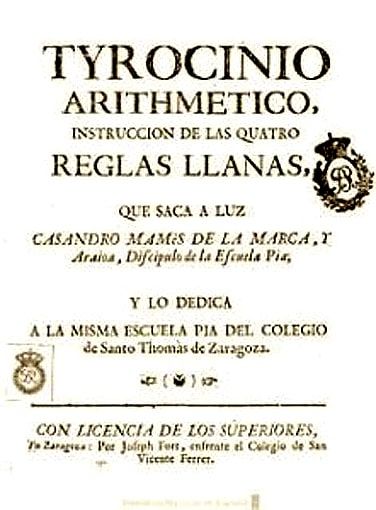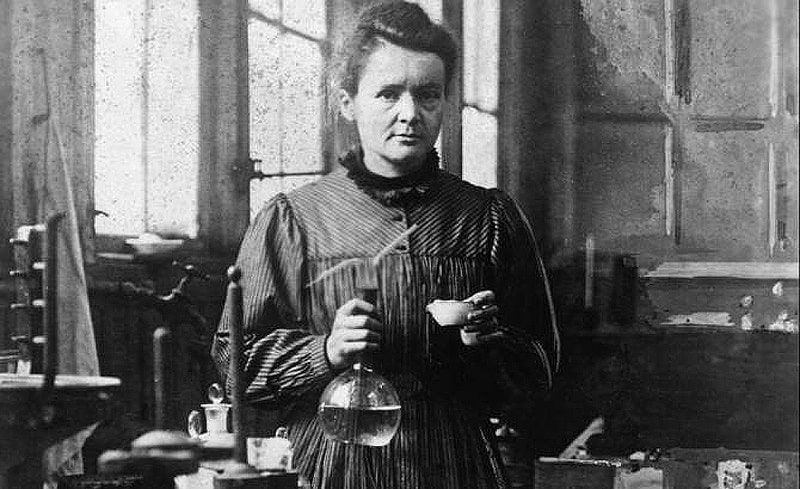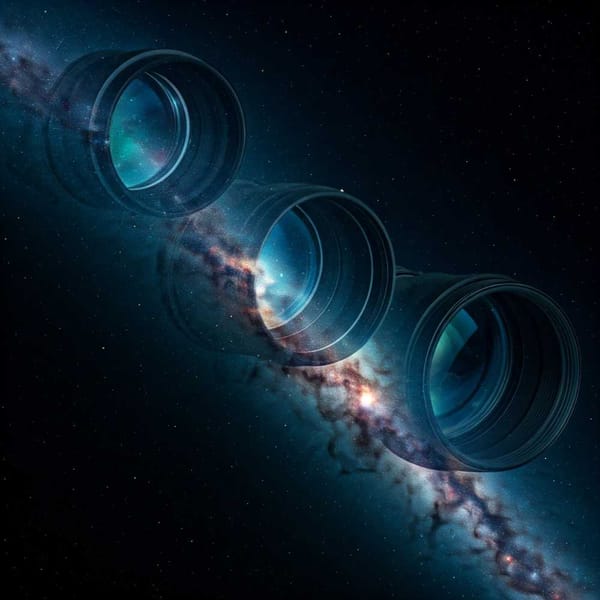Women in the history of science
Many women fought against all odds to dedicate themselves to their vocation: science. These are some of the most outstanding. In their time, the work of some was recognized, but others even saw their ideas "stolen" and attributed to colleagues or other scientists.

Several women fought against all odds to dedicate themselves to their vocation: science. These are some of the most outstanding... At the time, the work of some of them was recognized, but others even saw their ideas "stolen" and attributed to colleagues or other scientists.
Merit Ptah (3,000 B.C.)
She lived in ancient Egypt and her name means "Beloved of Ptah", a creator god for the Egyptians to whom they attributed healing powers. She is the first woman known by name in medicine and possibly the first woman mentioned in the entire history of science. Her image can be seen in a tomb in the necropolis near the step pyramid of Saqqara. Her son, who was a high priest, described her as "the chief physician". In her time, in cities such as Sais and Heliopolix, there were medical schools or "houses of life". In them, women learned to attend births and children and to cope with gynecological diseases. This participation of women in the development of medicine and surgery was very important and gave the female sex a presence in the public sphere and the sciences,
Hypatia of Alexandria (370-416)
She was the first woman to make a substantial contribution to the development of mathematics and astronomy, a member and head of the Neoplatonic school of Alexandria in the early 5th century. Hypatia is the first known female mathematician. She wrote on geometry, algebra, and astronomy improved the design of the primitive astrolabes, and invented a densimeter. For this reason, she is considered a pioneer in the history of women in science, even a martyr since her work was considered heresy by a large group of Christians, who brutally murdered her. Since then, Hypatia has been considered a symbol of the defense of science against irrationality and ignorance. In 2009, Alejandro Amenábar released "Agora", a film about her life and her findings, starring Rachel Weisz.
María Andresa Casamayor de la Coma (XVIII century)
The exact date of her birth is not known, but it is known that she died in 1780. Also a mathematician, she developed an intense activity at a time when women's access to scientific knowledge was impossible. She wrote two works on arithmetic. The first, entitled "Tyrocinio Arithmetico", is written in an agile language, with a large number of examples and real cases that allow the reader to learn directly the handling of the four rules of the minor algebra. It also shows a precise knowledge of the units of length, weight, and currency that were handled daily in the commerce of the 18th century.
The second one was entitled "El para sí solo". This work was released by her brothers after her death. The high cost of printing it meant that it was only 109 pages long. The manuscript has disappeared and we only know of it from writings of the time that relate that the work showed different applications of mathematical operations in daily life, very useful for merchants, farmers, and ranchers. The author signed her works with a male pseudonym, Casandro Mamés de La Marca y Araioa, a perfect anagram of her name.

Today, three centuries after her birth, María Andresa is still one of the great unknowns in the scientific and mathematical panorama. Despite having streets in her honor in Zaragoza and Gijón, and that in 2018 she was included in The Periodic Table of Women Scientists along with women scientists from all over the world, the vast majority of people do not know who she was and what the only woman of whom a science book written in the 18th century is preserved.
Sophie Germain (1776-1831)
To carry out her research, she was forced to assume a false identity, study in terrible conditions and work in intellectual isolation. Unable to attend school because women were not accepted, she managed to receive notes from professors. She enrolled at the Ecole Polytechnique in Paris under the name of a former student there, and some prominent professors took notice of this student and although they soon discovered her true sex, they protected her.
In 1816, being already highly appreciated in mathematical circles, she became famous when she obtained the prize proposed by the Academy of Sciences on the theory of elastic surfaces, a subject that had been submitted three times to competition and had remained deserted until then. She left extremely important contributions on the theory of elasticity and numbers, among others, that of Sophie Germain's prime numbers. She also made discoveries in mathematical physics and acoustics.
Jeanne Villepreux-Power (1794-1871)
After marrying an English nobleman in 1818 in Sicily, she took up residence there for more than 20 years. It was then that she began to show an interest in natural history. She was self-taught and traveled all over the island observing, recording, and describing all its flora and fauna. She focused her studies on mollusks and dedicated much of her work to the cephalopod Argonauta argo. She was the first person to discover how this creature manufactures its shell by coating itself instead of obtaining it from another animal as previously thought, and how it reproduces.
To observe the aquatic life of the species, she devised three different types of aquariums: the first, made of glass and very similar to those we can find today, she used in her study; another, also made of glass but surrounded by a grid to be submerged in the sea; and the third, a kind of cage for large mollusks, which could be anchored at a certain depth. She was a pioneer and self-taught marine biologist who is recognized as a forerunner of marine biology stations and "Mother of Aquarophilia."
Augusta Ada King, Countess of Lovelace (1815-1852)
Better known as Ada Lovelace, Augusta Ada King, Countess of Lovelace, was a brilliant English mathematician, daughter of the poet Lord Byron. Ahead of her time, Ada was the first computer scientist in history, considered the first computer programmer. She studied the work of Charles Babbage, an English mathematician, and scientist who is credited with the first idea for the conception of a computer since his Analytical Engine works on the same principle as today's computers. Among her notes on the machine is what is recognized today as the first algorithm intended to be processed by a machine. She deduced and envisioned the ability of computers to go beyond simple number crunching, while others, including Babbage himself, focused solely on these capabilities.
Sofia Kovalévskaya (1850-1891)
Sonia Kovalévskaya was a Russian mathematician who, to study at university, had to leave Russia, ask for special permission to attend classes, and request private lessons from illustrious mathematicians. In 1874, the University of Göttingen (Germany) awarded her a Ph.D. degree at the age of 24. Although she read her thesis in Göttingen, she had studied in Heidelberg and Berlin, where the university was so reactionary that women were not even allowed to set foot in its buildings. Her professor, Karl Weierstrass, one of the founders of modern mathematical analysis, had to repeat to her at home the lectures he gave at the university. Her thesis consisted of three parts, each of which would have sufficed to defend an "ordinary" thesis. The most important, the one that had impressed her professor, was on the solutions of an equation: the Cauchy-Kovalesvskaya theorem, as it is known today.
Marie Curie (1867-1934)
Marie Salomea Skłodowska, better known only by her husband's surname, Curie, was a Polish chemist and physicist who devoted her entire life to radioactivity, being the ultimate pioneer in this field. The first person to win two Nobel Prizes, for which she gave her life, to this day, her papers are so radioactive that they cannot be handled without special equipment. Through hard work and sacrifice, in 1893, Marie Curie graduated in Physics from the University of Paris, being number one in her class. A year later, she met the man who became her husband in 1895: Pierre Curie, also a scientist. Research on uranium radiation by physicist Henri Becquerel and the discovery of X-rays by Wilhelm Röntgen helped Curie to choose the topic of her thesis: Research on radioactive substances.

Fascinated by the progress of his wife's research, Pierre decided to put aside his studies on magnetism to help her. 1903 was the year of recognition for his work. Not only did she obtain her doctorate in physics cum laude, but she also received the Nobel Prize in Physics along with her husband and Becquerel for their research on radioactivity. In 1911, she won the Nobel Prize in Chemistry alone. This prize was awarded "in recognition of her services to the advancement of chemistry by the discovery of the elements radium and polonium, the isolation of radium and the study of the nature and compounds of this element".
Emmy Noether (1882-1935)
She could be considered as the most important woman in the history of mathematics and fact, she was considered as such by Einstein, among others. The figure of Noether occupies an indispensable place in the field of theoretical physics and abstract algebra, with great advances in the theories of rings, groups, and fields. During her lifetime she produced some 40 truly exemplary publications. The noetherian label is now used to designate many concepts in algebra. Her research created a body of principles that unified algebra, geometry, topology, and logic.
Barbara McClintock (1902-1992)
This American has left an important legacy in the field of genetics. She specialized in cytogenetics and obtained a Ph.D. in botany in 1927. Although for a long time her work was not taken into account, in 1983 she was awarded the Nobel Prize for her exceptional and incredibly advanced for her time theory of jumping genes, revealing the fact that genes were able to jump between different chromosomes. Today, this is an essential concept in genetics.
Rosalind Franklin (1920-1958)
She was a biophysicist and crystallographer, playing a crucial role in understanding the structure of DNA, RNA, viruses, carbon, and graphite. However, her contribution was not recognized in the same way as the work of James Dewey Watson, Francis Crick, and Maurice Wilkins. Franklin took the images of DNA by X-ray diffraction during her stay at King's College, London, obtaining the now-famous "Photo 51". This image, which suggested a helix structure of DNA, was shown by his departmental rival Wilkins to Watson. According to Francis Crick, the research and data obtained by her were key to the determination of the Watson and Crick model of the DNA double helix in 1953.
The DNA double helix model opened the way for the understanding of molecular biology and gene functions; a background that made it possible to establish the "complete" sequence of the human genome. Watson, Crick, and Wilkins shared the Nobel Prize for Physiology and Medicine in 1962. Among the viruses studied by Franklin were poliovirus and tobacco mosaic virus. Following her research, her teammate Aaron Klug won the Nobel Prize in Chemistry in 1982.
By Fernando Díaz




